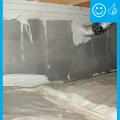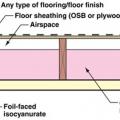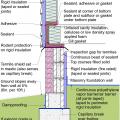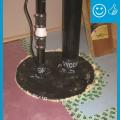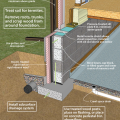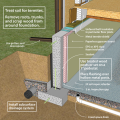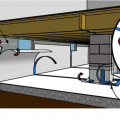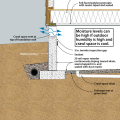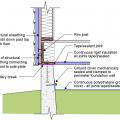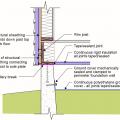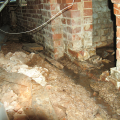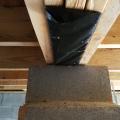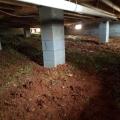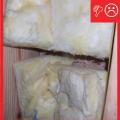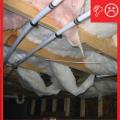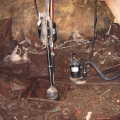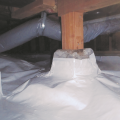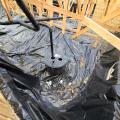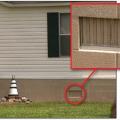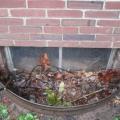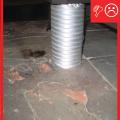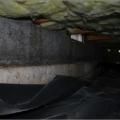Showing results 101 - 139 of 139
This floor assembly above a vented crawlspace controls vapor and heat transmission by using foil-faced isocyanurate rigid foam insulation installed underneath the floor joists and fiberglass insulation in the floor joist cavities
This house with interior insulated crawlspace is protected from pests with termite shield at sill plate, borate-treated framing, flashing at end of wall insulation, and a termite inspection gap at the top of the rigid foam
Unvented air-sealed crawlspace is insulated along the perimeter walls with rigid foam
Unvented concrete masonry unit crawl space with exterior insulation - designed for termite resistance in moderately infested areas
Unvented crawl space with interior insulation - designed for termite resistance in heavily infested areas
Vapor retarder already applied to the floor of the crawlspace and wrapping up the interior perimeter walls, lapped and sealed at the seams
Vented crawlspace cripple wall has seismic retrofits – plywood is added on interior that fastens to extra blocking added at sill plate and connected to foundation with new anchor bolts
Water-proof materials cover the exterior side of crawlspace windows in a crawlspace retrofit, while foil-faced rigid foams seals and insulates the inside face of the openings
Wrong - A typical vented crawlspace in North Carolina exhibits water leakage, poor drainage, and a low-quality vapor retarder that does not cover all of the ground surface and is not sealed to the walls.
Wrong - A vapor barrier should cover the top of the concrete block pier support in the crawl space.
Wrong - Crawlspace hatches should have weatherstripping and insulation when excluding the crawlspace from the building thermal envelope.
Wrong - Debris and potentially hazardous wiring are littering the crawl space floor, which also should be covered with a vapor barrier.
Wrong - No air barrier is present between the floor system and unconditioned space.
Wrong - The ground of the crawlspace should be covered with a vapor barrier that extends up the sides of the crawlspace.
Wrong - The sump pump alone cannot address the water infiltration issues in this crawlspace.
Wrong - The vapor retarder does not completely cover the pier block and is not sealed to the post; the support strapping pinches the flex duct.
Wrong -The top of the sump pump crock is too high above the crawlspace grade level for any water in the crawl to enter the sump.
Wrong – A clothes dryer that vents to the crawlspace can contribute moisture to the crawlspace; this can result in damp, molding, and rotting insulation
Wrong – A poorly sealed window and window well allow bulk water to enter the crawlspace from ground that slopes toward the structure
Wrong – No polyethylene sheeting vapor barrier is installed on the crawlspace floor
Wrong – The polyethylene sheeting vapor barrier is not attached to the piers with mechanical fasteners
Wrong – The vapor barrier is not secured to the walls of this crawlspace.
Wrong – This standard air vent has become blocked by flood debris and is located at the top of the foundation wall; it should not be used as a flood vent
Wrong – This vented crawlspace has standing water because steps were not taken to address site conditions that led to bulk water flow into the crawlspace
